Effitix Spot On
Effitix spot on contains fipronil and permethrin. Fipronil is an insecticide and acaricide belonging to the phenylpyrazole family.
Description
Effitix Spot On
Fipronil 6.1% M/V + Permethrin 54.5% M/V Spot on Solution for Dogs
Manufactured / Mktd by: Virbac
Dosage form: Liquid Spot-on solution (Clear yellow solution)
Presentation:
0.44 ml Very small dogs (1.5 – 4 Kg)
1.10 ml Small Dogs (4-10 kg)
2.20 ml Medium Dogs (10-20 kg)
4.40 ml Large Dogs (20-40 kg)
6.60 ml Very Large Dogs (40-60 kg)
Boxes of 1, 2, 4 and 24 pipettes.
Ingredients & Composition:
Each pipette contains:
Fipronil (6.1% M/V) Permethrin (54.5% M/V) Excipients
Very small dogs (1.5 – 4 Kg) 26.8 mg 240 mg qs to 0.44 ml
Small Dogs (4-10 kg) 67 mg 600 mg qs to 1.10 ml
Medium Dogs (10-20 kg) 134 mg 1200 mg qs to 2.20 ml
Large Dogs (20-40 kg) 268 mg 2400 mg qs to 4.40 ml
Very Large Dogs (40-60 kg) 402 mg 3600 mg qs to 6.60 ml
List of Excipients:
Butylhydroxyanisole (E320)
Butylhydroxytoluene (E321)
Benzyl alcohol (E1519)
Diethylene glycol monoethyl ether
Description / MOA:
Effitix spot on contains fipronil and permethrin. Fipronil is an insecticide and acaricide belonging to the phenylpyrazole family. Fipronil and its metabolite fipronil sulfonate act at ligand gated chloride channels, in particular those gated by the neurotransmitter gamma-aminobutyric acid (GABA). It also acts on channels gated by glutamate (Glu, unique invertebrate ligand-gated chloride channels) both desensitising (D) and non-desensitising (N). Thereby it blocks pre- and post-synaptic transfer of chloride ions across cell membranes which results in death of insects or acari due to uncontrolled activity of the central nervous system.
Permethrin (type I class pyrethroid) is an acaricides, insecticides and also acts as repellent. It affects voltage-gated sodium channels both in vertebrates and non-vertebrates. Pyrethroids are called “open channel blockers” because slowing of the activation and inactivation properties affects the sodium channel and leads to hyperexcitability and death of the parasite.
The product provides an immediate and persistent insecticidal activity against fleas (Ctenocephalides felis), immediate acaricidal activity against Ixodes ricinus ticks, persistent acaricidal activity against ticks (Dermacentor reticulatus, Rhipicephalus sanguineus and Ixodes ricinus) and repellent (anti-feeding) activity against mosquitoes (Culex pipiens, Aedes aegypti) and sand-flies (Phlebotomus perniciosus).
The product was experimentally shown to indirectly reduce the risk of canine babesiosis (Babesia canis canis) transmission from infected ticks (Dermacentor reticulatus) in treated dogs until 28 days after application when applied at least 2 days prior to tick exposure.
Pharmacokinetic particulars:
Sulfone derivative is the major metabolite of Fipronil which possesses both insecticidal and acaricidal properties.
Following topical application to dogs, under the normal conditions of use:
-
- Permethrin and fipronil, together with its major metabolite, are well distributed in the haircoat of the dog within one day after application. The concentrations of permethrin, fipronil and fipronil sulfone are detectable for at least 35 days after application in the haircoat coat but decrease with time gradually after application.
- Fipronil plasma concentrations peak after 5 days whereas its active metabolite fipronil sulfone peaks around 14 days. Concentrations are quantifiable up to 35 days. Topically applied permethrin displays very low levels of systemic absorption.
Category: Ectoparasiticides for topical use
Combination of permethrin and fipronil also acts as an insecticide, acaricide and as a repellent to sand flies and mosquitoes.
Indication / Uses:
Effitix spot on is a combination of fipronil and permethrin indicated in dogs, to be used against infestations with fleas and/or ticks when repellent (anti-feeding) activity is also necessary against sand-flies and/or mosquitoes.
Dosage:
The recommended minimum dose of fipronil is 6.7 mg /kg b.w. and permethrin is 60 mg /kg bw.
Use pipette of respective body weight range and for dogs > 60 kg the appropriate combination of pipettes should be used.
Method of administration:
Remove the pipette from the overblister. Hold the pipette upright. Tap the narrow part of the pipette and ensure that the contents are within the main body of the pipette. Break the snap-off top along the scored line of the pipette. Part the pet’s coat until its skin is visible. Place the tip of the pipette directly against the bared skin. Squeeze gently several times to empty its contents at two to four different points. Apply depending on body weight, along the pet’s back between the base of the tail and the shoulder. As a general guide, apply in two spots on dogs under 20 kg, whereas those dogs who are over 20 kg should receive the product in 2-4 spots along the back.
Advice on correct administration :
Treatment schedule:
The product should be used based on a confirmed infestation of ticks and fleas. It can be used in case of risk of infestation of fleas/ ticks and repellent (anti-feeding) activity is also necessary against sand-flies and/or mosquitoes. Depending on the ectoparasite challenge treatment can be repeated on the recommendation of a vet. The interval between two treatments should be at least 4 weeks (see also section Overdose).
Overdoses / Side effects / Contraindications:
Safety has been demonstrated with up to 5 times the maximum recommended dose in healthy 12-week-old puppies treated 3 times at intervals of 3 weeks.
The risk of experiencing adverse reactions (see section on Adverse Reactions) may however increase with overdosing, so animals should always be treated with correct pipette size according to bodyweight.
Do not use in case of known hypersensitivity to the active substances or to any of the excipients.
Do not use on rabbits and cats as adverse reactions and even death can occur (see also section on special precautions for use in animals). Do not use on sick (e.g. systemic diseases, fever) or convalescent animals.
Transient cutaneous reactions like pruritus, erythema at the application site and general pruritus have been reported after topical use of the product. Transient behavioural changes like hyperactivity/ agitation) and vomiting have occasionally been reported/ observed. if licking occurs, transient hypersalivation may be observed.
Special warnings for each target species:
Effitix spot on remains effective even after exposure to sunlight or if the animal becomes wet after rain. But avoid frequent swimming or shampooing of treated dogs. This may adversely affect maintenance of product effectiveness.
Dogs infested with fleas may show Flea Allergy Dermatitis (FAD) which is an allergic reaction to the flea saliva. In case if your dog has FAD with inflamed and itchy skin, is restless and uncomfortable, bites/ scratches excessively then seek the advice of a veterinarian.
Treat all the dogs in a household to reduce re-infestation from emergence of new fleas. Other animals except dogs living in the same premises should also be treated with a suitable ectoparasiticide product. Fleas from pets frequently infest the animal’s basket, bedding, and usual resting places including carpets and soft furniture, which should be treated with an appropriate insecticide in case of large infestation and at the start of the control measures and routinely vacuumed. Single sandflies, mosquitoes, or ticks may bite or attach to the skin. Because of this, it is possible that these parasites could transmit infectious diseases if the environment is unfavourable.
Sandflies and mosquitoes have a four-week anti-feeding effect, according to studies. Therefore, it is advised to start the therapy as soon as possible before anticipated exposure for short-term (less than 4 weeks) travel to endemic areas. The treatment plan should be based on local epidemiological data for exposures lasting longer than four weeks, such as in endemic animals or travellers.
Special precautions for use in animals:
Prior to treatment, animals should be weighed precisely.
Dogs less than 1.5 kg in weight or older than 12 weeks old have not been tested for the product’s safety.
It is important to take precautions to keep the recipient dogs’ eyes and mouths from coming into touch with the pipette’s contents. Avoiding oral absorption by treated or in-contact animals licking the treatment site is especially important.
Due of the peculiar physiology of cats, which prevents them from properly metabolising some substances, including permethrin, this product is exceedingly dangerous to cats and could be fatal. In the event of an unintentional cutaneous exposure, immediately seek veterinary advice and clean or soap the cat.
Keep treated dogs away from cats after treatment until the application site is dry to avoid cats from unintentionally coming into contact with the product. It’s crucial to prevent cats from grooming a dog that has received this treatment at the application site.
If such an exposure occurs, you should consult a veterinarian right once.
Do not use on rabbits and cats.
Special precautions to be taken by the person administering the veterinary medicinal product to animals:
The product may cause neurotoxicity. The product may be harmful if swallowed. Avoid ingestion including hand-to-mouth contact. In the event of an accidental intake, seek medical attention right away and be prepared to show the doctor the package leaflet or label.
This product may irritate mucous membranes and the eyes. Avoid touching your mouth or eyes with the product, especially hand-to-mouth and hand-to-eye contact. If the product accidentally gets in your eyes, quickly and thoroughly rinse them with water. Consult a doctor if eye irritation persists, and be prepared to show the doctor the package leaflet or label.
Avoid contact with the skin. Should the product come into contact with skin, wash the contacted area immediately with soap and water.
Wash hands thoroughly after use.
Do not eat, drink or smoke while handling the veterinary medicinal product Keep strictly out of reach and sight of children.
Avoid contact with the veterinary pharmaceutical product if you have a known hypersensitivity (allergy) to permethrin, fipronil, or any of the other chemicals. In extremely rare circumstances, this product may cause respiratory irritation and skin responses in certain people.
Animals that have been treated shouldn’t be handled or played with for roughly 12 hours after the application site has dried. Therefore, it is advised to treat the animals in the late afternoon or early evening to reduce interaction with the treated animal. Treatment-day animals shouldn’t be allowed to spend the night with their owners, especially young children.
Keep the stored pipettes in the original packaging. Make sure to properly dispose of used pipettes right away to keep kids from getting access to them.
Other precautions:
Fipronil and permethrin may adversely affect aquatic organisms. After application, dogs shouldn’t be let to swim in water for two days.
On painted, varnished, or other household surfaces or furnishings, the product may have negative consequences. Before allowing contact with such products, let the application site dry.
Pharmaceutical precautions / Instructions:
Keep out of the sight and reach of children. Store below 30°C.
Keep the blister pack in the outer carton in order to protect from light.
Not for human use. For animal treatment only.
Shelf-life of the veterinary medicinal product as packaged for sale: 24 months
Shelf life after first opening the immediate packaging: Immediate use.
Interaction with other medicinal products and other forms of interaction:
None known.
Incompatibilities: None known.
Special Precautions for The Disposal of Unused Product or Waste Materials, If Any:
It is important to dispose of any unused veterinary medications or waste products created from them in line with local regulations. Do not introduce the veterinary medication or empty container into ponds, streams, or ditches as this may be harmful to fish and other aquatic organisms.
Safety: age / Pregnancy/ Withdrawal
Laboratory studies using fipronil and permethrin have not shown any evidence of teratogenic or embryotoxic effect. However, no studies have been carried out with this product in pregnant or lactating bitches. Use during pregnancy or lactation must therefore be in accordance with professional veterinary advice and a benefit/risk assessment.
Withdrawal Period: Not applicable.
Substitute: Updating soon
Only logged in customers who have purchased this product may leave a review.


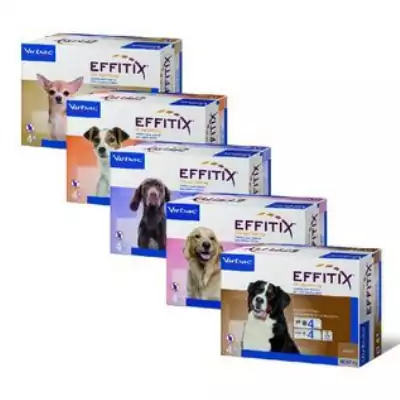
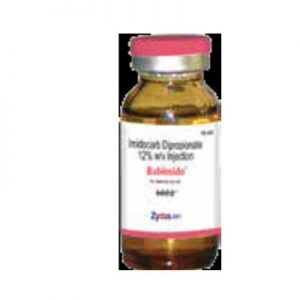
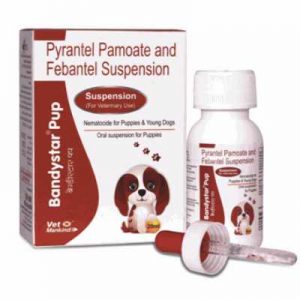
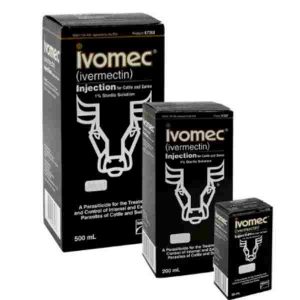
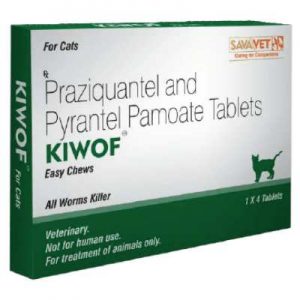
Reviews
There are no reviews yet.